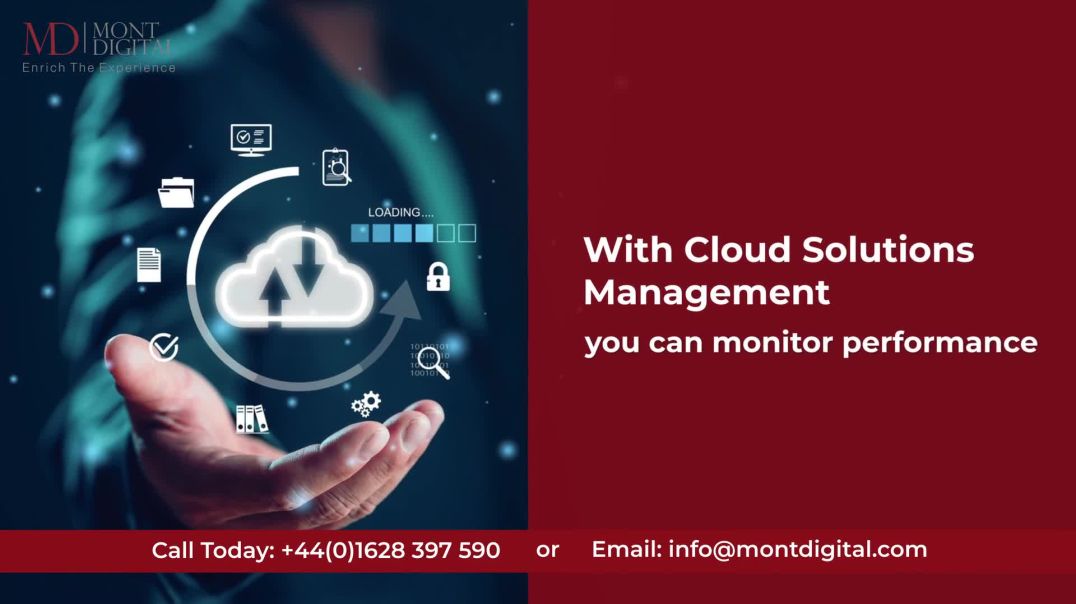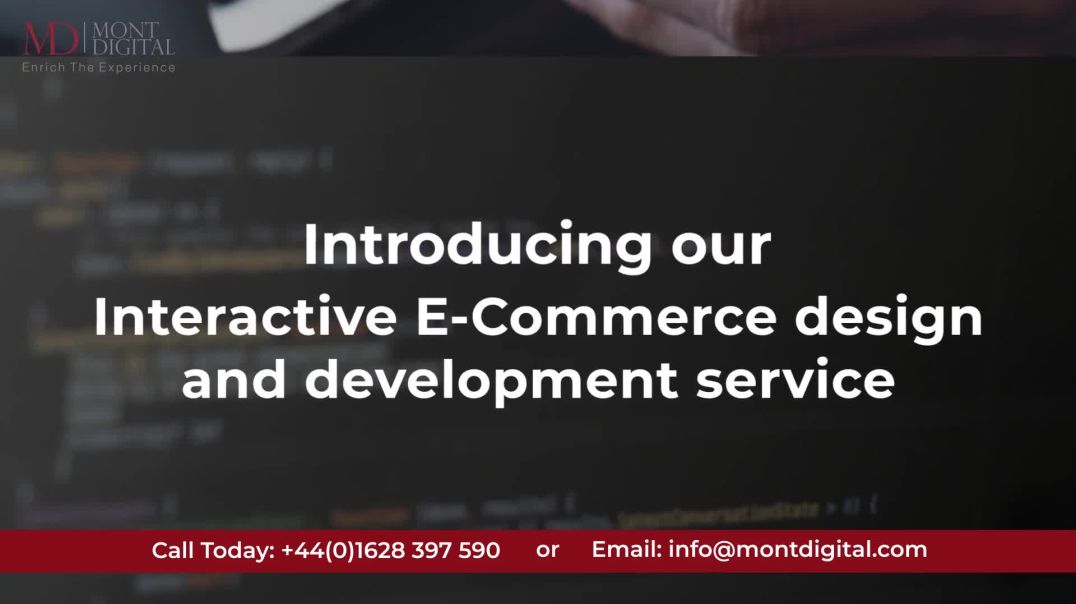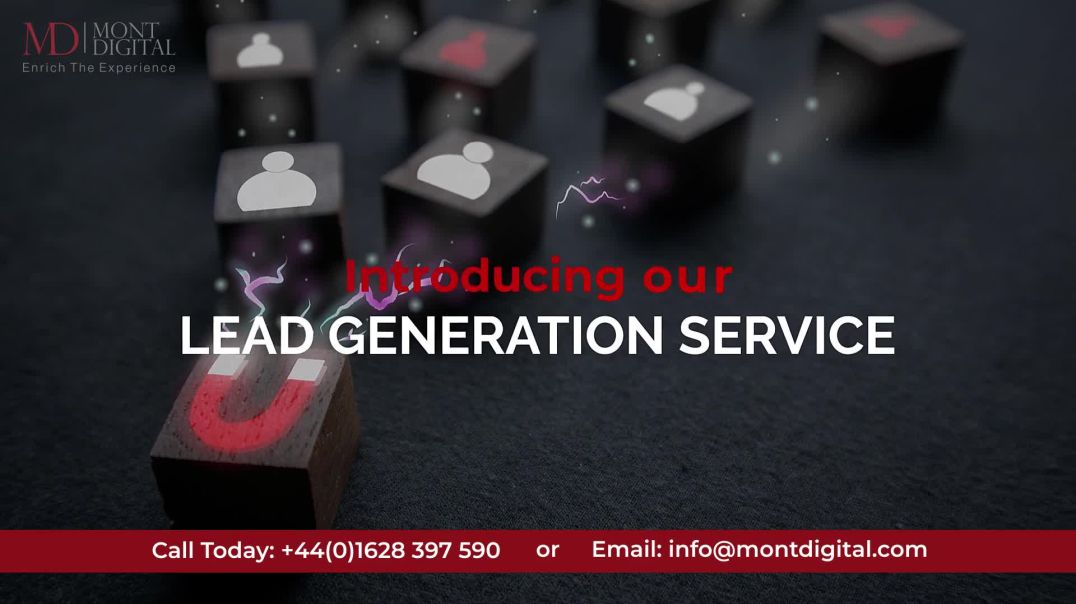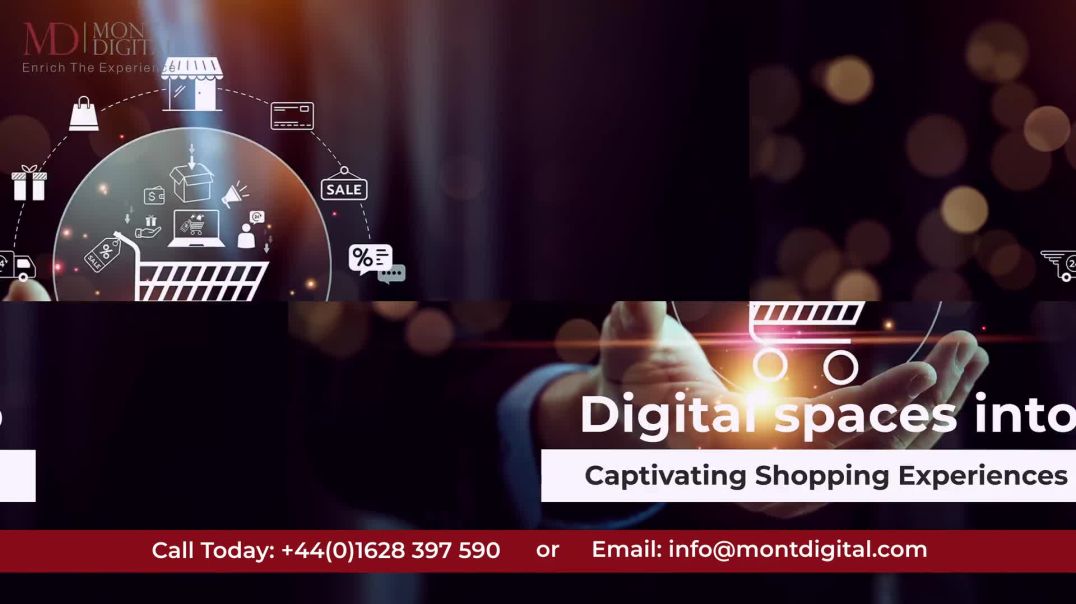Other
Facebook and YouTube have become powerhouse platforms for digital advertising, offering unparalleled reach and targeting capabilities. Whether you're looking to increase brand awareness, drive traffic to your website, or generate leads, strategic campaign management is key to achieving success.
Key Aspects of Facebook and YouTube Campaign Management:
Successful campaign management involves several key components:
Objective Setting and Strategy Development: Defining clear goals for your campaigns, whether it’s increasing followers, driving conversions, or boosting engagement. Tailoring strategies to align with these objectives ensures campaigns are focused and effective.
Audience Targeting: Leveraging advanced targeting options to reach specific demographics, interests, behaviors, and locations. Custom audiences, lookalike audiences, and retargeting strategies help maximize relevance and engagement.
Creative Development: Crafting compelling ad creatives that resonate with your target audience. This includes attention-grabbing visuals, persuasive copywriting, and clear calls-to-action (CTAs) that encourage user interaction.
Budget Optimization: Allocating budget effectively across campaigns to maximize ROI. Monitoring ad performance, adjusting bids, and optimizing for cost-per-acquisition (CPA) or return on ad spend (ROAS) ensures efficient use of advertising dollars.
Ad Placement and Optimization: Selecting the right ad formats (e.g., video ads, carousel ads, sponsored posts) and optimizing placements across Facebook and YouTube to reach users at different stages of the customer journey.
Performance Monitoring and Analytics: Utilizing analytics tools to track key performance metrics (e.g., impressions, clicks, conversions) and measure campaign success. Analyzing data helps identify trends, optimize campaigns in real-time, and allocate resources effectively.
Challenges and Solutions:
Campaign management comes with challenges such as ad fatigue, audience saturation, and evolving platform algorithms. Staying updated with platform changes, testing different strategies, and maintaining creative freshness are essential for sustained campaign performance.
Future Trends and Innovations:
Looking ahead, advancements in AI-driven advertising, augmented reality (AR) ads, and interactive video formats are set to reshape Facebook and YouTube campaign strategies. These technologies offer opportunities for more personalized, engaging, and immersive ad experiences that capture and retain audience attention effectively.
Security Management encompasses a comprehensive approach to safeguarding data, systems, and networks from unauthorized access, breaches, and cyberattacks. It involves a combination of proactive measures, policies, and technologies designed to detect, prevent, and respond to security incidents swiftly and effectively.
Key aspects of Security Management include:
Risk Assessment and Mitigation: Conducting regular assessments to identify vulnerabilities, assess potential threats, and prioritize security measures based on risk levels. Mitigation strategies may include patch management, vulnerability scanning, and threat modeling to reduce exposure to cyber risks.
Security Governance and Compliance: Establishing governance frameworks, policies, and procedures to ensure adherence to security standards, regulations (such as GDPR, HIPAA, PCI DSS), and industry best practices. Security governance frameworks provide guidance on data protection, access controls, and incident response protocols.
Network Security: Implementing measures to protect networks from unauthorized access, data breaches, and malicious activities. This includes deploying firewalls, intrusion detection/prevention systems (IDS/IPS), secure VPNs, and segmentation to isolate sensitive data and critical infrastructure.
Endpoint Security: Securing endpoint devices (e.g., laptops, smartphones, IoT devices) from cyber threats through endpoint protection platforms (EPP), antivirus software, encryption, and mobile device management (MDM) solutions. Endpoint security is crucial as endpoints are often targets for cyberattacks.
Security Awareness and Training: Educating employees about cybersecurity best practices, phishing prevention, and incident reporting to foster a security-conscious culture. Regular training sessions and awareness programs empower employees to recognize and mitigate security risks effectively.
Incident Response and Recovery: Developing and testing incident response plans to address security breaches promptly and minimize impact. Incident response teams follow predefined procedures for containment, investigation, mitigation, and recovery to restore operations swiftly.
Security Management also encompasses continuous monitoring and threat intelligence to stay ahead of emerging threats. Security operations centers (SOCs) and threat detection platforms use real-time monitoring, analytics, and threat intelligence feeds to detect anomalies and potential security incidents.
Challenges in Security Management include addressing complex threats, managing security across cloud environments, ensuring compliance with evolving regulations, and bridging skill gaps in cybersecurity talent. Effective Security Management requires collaboration across departments, from IT and operations to legal and compliance teams.
Data Management encompasses a comprehensive set of practices and technologies designed to ensure data integrity, availability, and usability throughout its lifecycle. In today's data-driven world, organizations face increasing volumes of data from diverse sources, including transactions, customer interactions, IoT devices, and more. Managing this data efficiently is essential for deriving value and maintaining competitive advantage.
Key components of Data Management include:
Data Governance: Establishing policies, roles, and responsibilities to ensure that data is managed and used appropriately across the organization. Data governance frameworks address data quality, security, privacy, and compliance requirements.
Data Integration: Consolidating data from disparate sources into a unified view for analysis and decision-making. Integration involves processes such as Extract, Transform, Load (ETL), real-time data streaming, and data virtualization to create a cohesive data ecosystem.
Data Quality Management: Ensuring that data is accurate, complete, consistent, and timely. Data quality tools and processes identify and resolve issues such as duplicate records, missing values, and inconsistencies to maintain data reliability.
Master Data Management (MDM): Creating and managing a single, authoritative source of truth for critical data entities (e.g., customers, products) across the organization. MDM ensures data consistency and enhances data-driven insights and operations.
Data Security and Privacy: Implementing measures to protect data from unauthorized access, breaches, and cyber threats. Security practices include encryption, access controls, data masking, and compliance with regulations like GDPR, HIPAA, and CCPA.
Data Storage and Lifecycle Management: Storing data in appropriate repositories (e.g., databases, data warehouses, cloud storage) based on access needs, performance requirements, and cost considerations. Lifecycle management involves data retention policies, archiving, and data disposal practices.
Effective Data Management addresses challenges such as data silos, interoperability issues, scalability, and evolving regulatory requirements. It requires collaboration among stakeholders, including IT professionals, data scientists, business analysts, and compliance officers, to align data initiatives with organizational goals.
Looking ahead, the future of Data Management is shaped by advancements in technologies such as big data analytics, artificial intelligence (AI), machine learning (ML), and blockchain. These innovations offer opportunities to derive deeper insights, automate processes, and enhance decision-making capabilities.
Cloud solutions have revolutionized how organizations manage and deploy their IT infrastructure. From startups to enterprises, businesses are increasingly leveraging cloud services for flexibility, cost-efficiency, and enhanced productivity. Cloud Solutions Management encompasses a range of practices and strategies aimed at maximizing the benefits of cloud computing while mitigating risks and ensuring compliance with industry standards.
Key aspects of Cloud Solutions Management include:
Cloud Migration and Deployment: Guiding organizations through the process of migrating applications and data to cloud platforms such as Amazon Web Services (AWS), Microsoft Azure, Google Cloud Platform (GCP), and others. Effective deployment strategies ensure seamless transition and optimal resource utilization.
Cost Optimization: Analyzing cloud usage and implementing cost-saving measures such as rightsizing instances, leveraging spot instances, and optimizing storage and networking costs. Continuous monitoring and adjustment help organizations achieve financial efficiency without compromising performance.
Security and Compliance: Implementing robust security measures to protect data and applications hosted in the cloud. This includes encryption, identity and access management (IAM), network security configurations, and compliance with industry regulations such as GDPR, HIPAA, and PCI DSS.
Performance Monitoring and Optimization: Utilizing monitoring tools and performance metrics to track the health and performance of cloud resources. Proactive optimization ensures that applications run smoothly, with minimal latency and downtime.
Disaster Recovery and Business Continuity: Developing and testing disaster recovery plans to ensure data integrity and minimize downtime in case of system failures or cyber incidents. Cloud-based backups and replication strategies play a critical role in maintaining business continuity.
Automation and DevOps Integration: Leveraging automation tools and DevOps practices to streamline deployment, configuration management, and continuous integration/continuous delivery (CI/CD) pipelines. Automation improves agility, scalability, and collaboration across development and operations teams.
Cloud Solutions Management also addresses challenges such as vendor lock-in, data sovereignty concerns, and skill gaps among IT professionals. It requires a strategic approach to align cloud adoption with business goals and IT objectives effectively.
Looking ahead, the future of Cloud Solutions Management is marked by advancements in containerization (e.g., Docker, Kubernetes), serverless computing, and AI-driven cloud operations. These technologies promise greater agility, efficiency, and innovation in managing cloud environments.
Transforming your online store into a dynamic and engaging platform requires more than just functional design—it demands innovation in user experience. Welcome to our comprehensive guide on creating interactive e-commerce websites. In this video, we explore how businesses can elevate their online presence by integrating advanced features and strategic design elements to enhance customer engagement and drive conversions.
In today's digital marketplace, standing out means offering more than just products. It’s about crafting an immersive journey that resonates with your audience. Interactive e-commerce websites are designed to achieve just that—by leveraging technology to create personalized and interactive experiences that keep visitors engaged and coming back for more.
Imagine a website where customers can visualize products in their own space using augmented reality, or customize their purchases on-the-fly with intuitive configurators. These interactive features not only streamline the buying process but also empower users to make informed decisions, boosting confidence and satisfaction.
Key to the success of interactive e-commerce websites is personalization. By understanding each customer's preferences and behaviors, these platforms deliver tailored content, recommendations, and promotions that feel uniquely relevant. This level of customization not only enhances user experience but also fosters loyalty and increases repeat purchases.
Visual search capabilities further enrich the shopping experience by allowing customers to find products quickly using images rather than text. This feature is particularly advantageous for fashion, home decor, and beauty industries where visual appeal plays a crucial role in purchasing decisions.
Moreover, integrating user-generated content such as reviews, ratings, and photos adds authenticity and builds trust among potential buyers. When shoppers see positive feedback and real-life images from satisfied customers, they are more likely to convert.
Live chat support and AI-powered chatbots provide immediate assistance, answering queries and guiding users through their purchase journey in real-time. This proactive approach not only resolves issues promptly but also reinforces customer confidence and satisfaction.
Designing an interactive e-commerce website requires careful consideration of user interface and experience. A seamless and intuitive navigation system ensures that visitors can easily explore products and find what they need without frustration. Mobile optimization is also crucial, given the increasing number of shoppers using smartphones and tablets to make purchases.
Loading speed is another critical factor. Fast-loading pages reduce bounce rates and improve user retention, ensuring a smooth and uninterrupted browsing experience. Visual appeal matters too—thoughtful use of colors, fonts, and imagery creates a visually appealing environment that highlights products and promotions effectively.
Implementing an interactive e-commerce website involves selecting the right platform and integrating essential features. Platforms like Shopify, WooCommerce, and Magento offer robust solutions that support scalability and customization. Integrating advanced functionalities such as visual search, virtual try-ons, and personalized recommendations requires expertise but pays off in enhanced user engagement and increased conversions.
Despite its benefits, building an interactive e-commerce website comes with challenges. From technical complexities to budget constraints, businesses must navigate various hurdles to create a seamless and efficient online shopping experience. However, the potential rewards—such as improved customer retention, higher conversion rates, and a competitive edge—are well worth the investment.
Looking ahead, the future of interactive e-commerce is bright with emerging technologies like augmented reality (AR), artificial intelligence (AI), and voice commerce poised to further transform the landscape. These innovations will continue to redefine how customers interact with online stores, offering even more immersive and personalized shopping experiences.
In conclusion, designing an interactive e-commerce website is not just about selling products—it's about creating memorable experiences that resonate with customers. By embracing innovation, personalization, and user-centric design principles, businesses can create a competitive advantage and thrive in the digital marketplace.
Join us on this journey to explore the world of interactive e-commerce. Subscribe to our channel for more insights, tips, and strategies on enhancing your online presence and delivering exceptional customer experiences. If you found this video informative, don’t forget to like, share, and comment below. Thank you for watching!
Network management involves overseeing and maintaining computer networks, including hardware, software, and services. It encompasses tasks such as monitoring network performance, configuring devices, ensuring security, and troubleshooting issues to keep networks running smoothly.
Importance of Network Management:
In today's digital age, networks are fundamental to organizational operations, facilitating communication, data sharing, and application access. Effective network management is crucial for:
Performance Optimization: Ensuring networks operate at peak efficiency to meet user demands and support business-critical applications.
Security Enhancement: Protecting networks from cyber threats, unauthorized access, and data breaches.
Cost Efficiency: Optimizing network resources to minimize downtime, improve productivity, and reduce operational costs.
Scalability: Facilitating network growth and expansion to accommodate increasing data volumes and user needs.
Key Components of Network Management:
Network Monitoring: Continuous monitoring of network performance metrics (e.g., bandwidth utilization, latency, packet loss) using tools like SolarWinds, PRTG Network Monitor, or Cisco Prime.
Configuration Management: Managing network device configurations (routers, switches, firewalls) to ensure consistency, security, and compliance with organizational policies.
Security Management: Implementing security measures such as firewalls, VPNs, intrusion detection/prevention systems (IDS/IPS), and encryption to safeguard network assets and data.
Traffic Analysis: Analyzing network traffic patterns and trends to optimize bandwidth allocation, identify anomalies, and mitigate network congestion.
Network Automation: Leveraging automation tools (e.g., Ansible, Puppet, Chef) to streamline routine tasks, enforce policies, and improve operational efficiency.
Tools and Technologies for Network Management:
Explore essential tools and technologies used in network management:
Network Monitoring Tools: Nagios, Zabbix, and Wireshark for real-time monitoring, analysis, and troubleshooting.
Configuration Management Tools: Cisco DNA Center, Juniper Network Director, and SolarWinds Network Configuration Manager for centralized configuration management.
Security Tools: Palo Alto Networks, Fortinet, and Check Point for next-generation firewall (NGFW) and threat detection/prevention.
Network Performance Tools: Riverbed SteelCentral, NetFlow Analyzer, and Cisco Network Performance Monitor for performance optimization and reporting.
Cloud Network Management: AWS CloudWatch, Azure Network Watcher, and Google Cloud Network Intelligence Center for managing cloud-based networks.
Best Practices for Effective Network Management:
Regular Audits: Conduct regular network audits to assess performance, security posture, and compliance with industry standards.
Network Documentation: Maintain up-to-date documentation of network configurations, diagrams, and troubleshooting procedures for reference.
Patch Management: Apply patches and updates promptly to address vulnerabilities and enhance network security.
Backup and Recovery: Implement robust backup solutions and disaster recovery plans to minimize data loss and ensure business continuity.
Training and Education: Invest in continuous training for IT staff to keep them updated on network technologies, best practices, and emerging threats.
Server management encompasses the tasks and processes involved in overseeing and maintaining server infrastructure. It includes monitoring, configuring, securing, and optimizing servers to ensure they operate smoothly and efficiently.
Importance of Server Management:
Servers form the backbone of IT infrastructure, hosting applications, websites, databases, and more. Effective server management is crucial for:
Performance: Ensuring servers operate at peak performance levels to handle user demands.
Security: Protecting data and applications from unauthorized access and cyber threats.
Reliability: Minimizing downtime and ensuring continuous availability of services.
Scalability: Facilitating growth and expansion by optimizing server resources.
Key Aspects of Server Management:
Monitoring and Performance Tuning: Regular monitoring of server metrics like CPU usage, memory utilization, disk space, and network performance to identify and resolve bottlenecks.
Security Management: Implementing robust security measures such as firewalls, encryption, access controls, and regular security audits to protect against vulnerabilities and attacks.
Backup and Disaster Recovery: Establishing backup protocols and disaster recovery plans to safeguard data and minimize downtime in case of hardware failure or cyber incidents.
Patch Management: Keeping servers updated with the latest security patches, software updates, and firmware upgrades to address vulnerabilities and improve performance.
Resource Allocation: Optimizing server resources (CPU, memory, storage) to meet application demands efficiently and cost-effectively.
Tools and Technologies for Server Management:
Explore essential tools and technologies to streamline server management tasks:
Monitoring Tools: Nagios, Zabbix, and Prometheus for real-time monitoring and alerting.
Automation Tools: Ansible, Puppet, and Chef for automating configuration management and deployment.
Security Tools: Security Information and Event Management (SIEM) tools like Splunk and ELK Stack for threat detection and incident response.
Backup Solutions: Veeam, Acronis, and Backup Exec for reliable data backup and recovery.
Virtualization Platforms: VMware, Hyper-V, and KVM for creating virtual environments to maximize server efficiency.
Best Practices for Effective Server Management:
Regular Maintenance: Perform routine maintenance tasks such as updates, patches, and system checks to prevent issues.
Documentation: Maintain comprehensive documentation of server configurations, procedures, and troubleshooting steps for reference.
Capacity Planning: Monitor resource usage trends and plan for future capacity needs to avoid performance degradation.
Disaster Preparedness: Test backup and recovery procedures regularly to ensure data integrity and minimize recovery time objectives (RTOs) during emergencies.
Compliance and Regulations: Adhere to industry regulations and compliance standards (e.g., GDPR, HIPAA) to protect sensitive data and maintain legal requirements.
Challenges in Server Management:
While server management offers substantial benefits, challenges include:
Complexity: Managing diverse server environments with varying configurations and requirements.
Security Risks: Mitigating evolving cybersecurity threats and maintaining data privacy.
Cost Management: Balancing infrastructure costs with performance and scalability needs.
Skill Requirements: Acquiring and retaining skilled IT professionals capable of managing complex server environments.
Web push notifications are clickable messages sent to users’ browsers, even when they are not on your website. They serve as a powerful tool for re-engaging users, delivering timely updates, promotions, and personalized content directly to their desktop or mobile devices.
Benefits of Web Push Notifications:
Instant Reach: Reach users instantly with important updates or promotions.
Increased Engagement: Drive higher click-through rates (CTRs) compared to email marketing.
Personalization: Deliver personalized messages based on user behavior and preferences.
Automation: Set up automated campaigns for scheduled notifications based on triggers.
Cross-Platform Compatibility: Compatible across desktop and mobile browsers, ensuring broad reach.
Key Features of Web Push Notifications:
Opt-in Permission: Users must opt-in to receive notifications, ensuring compliance and user consent.
Rich Media Support: Include images, emojis, and interactive elements to enhance message effectiveness.
Segmentation: Target specific user segments with personalized messages for higher relevance.
Analytics: Track campaign performance with metrics like open rates, CTRs, and conversion rates.
A/B Testing: Test different messages and timing to optimize engagement and conversions.
Implementing Web Push Notifications:
Here’s how you can effectively implement web push notifications:
Choose a Platform: Select a web push notification platform like OneSignal, PushEngage, or PushCrew.
Design Engaging Messages: Craft compelling messages with clear value propositions and CTAs.
Segment Your Audience: Segment users based on demographics, behavior, or interests for targeted messaging.
Set Automation Rules: Create automated workflows for triggered notifications, such as abandoned cart reminders or new content alerts.
Monitor and Optimize: Continuously monitor performance metrics and optimize campaigns based on insights.
Best Practices for Web Push Notifications:
Timing: Send notifications at optimal times based on user time zones and behavior.
Relevance: Personalize messages to match user preferences and previous interactions.
Frequency: Avoid over-sending notifications to prevent user fatigue and maintain engagement.
Clear CTAs: Use clear and actionable CTAs to guide users towards desired actions.
Compliance: Ensure compliance with data privacy regulations like GDPR and CCPA.
Challenges in Web Push Notifications:
While web push notifications offer significant advantages, challenges include:
Opt-in Rates: Encouraging users to opt-in can be challenging without compelling incentives.
Content Relevance: Ensuring messages are relevant and valuable to each user segment.
Platform Limitations: Adapting to different browser and device capabilities for consistent delivery.
Lead generation is the process of attracting and converting prospects into potential customers. It’s a crucial aspect of marketing and sales, driving business growth by identifying and nurturing potential leads through various channels and tactics.
Importance of Lead Generation:
In today's competitive market, generating quality leads is essential for sustainable business growth. Effective lead generation strategies not only increase sales but also build brand awareness, establish credibility, and foster long-term customer relationships.
Key Strategies for Lead Generation:
Content Marketing: Create valuable content that addresses your audience’s pain points and interests to attract leads organically.
SEO and SEM: Optimize your website and content for search engines to attract organic traffic and run targeted paid campaigns for immediate results.
Social Media Marketing: Utilize platforms like Facebook, LinkedIn, and Twitter to engage with prospects and drive traffic to your website.
Email Marketing: Nurture leads through personalized email campaigns, offering relevant content and incentives to encourage conversions.
Landing Pages and CTAs: Design compelling landing pages with clear calls-to-action (CTAs) to capture visitor information effectively.
Tools and Technologies for Lead Generation:
Explore essential tools that streamline and enhance your lead generation efforts:
CRM Systems: Manage and track leads throughout the sales funnel with Customer Relationship Management (CRM) software like Salesforce, HubSpot, or Zoho CRM.
Marketing Automation: Automate repetitive tasks and nurture leads efficiently using platforms such as Marketo, Mailchimp, or ActiveCampaign.
Analytics and Reporting: Measure campaign performance and optimize strategies with tools like Google Analytics, Kissmetrics, or Moz.
Lead Magnets: Offer valuable resources such as ebooks, webinars, or free trials to capture lead information and build a subscriber base.
Social Media Management: Schedule posts, monitor engagement, and analyze metrics with tools like Buffer, Hootsuite, or Sprout Social.
Best Practices for Effective Lead Generation:
Target Audience Research: Understand your ideal customer profile and tailor your strategies to resonate with their needs and preferences.
Multi-channel Approach: Utilize a combination of online and offline channels to reach prospects across different touchpoints.
Consistent Follow-up: Nurture leads through personalized communication and timely follow-ups to maintain engagement and trust.
Optimization and Testing: Continuously test and optimize your campaigns, landing pages, and CTAs to improve conversion rates over time.
Compliance and Privacy: Ensure compliance with data protection regulations like GDPR and CCPA to build trust and protect consumer privacy.
Challenges in Lead Generation:
While lead generation offers substantial benefits, marketers often face challenges such as:
Lead Quality: Ensuring leads are qualified and likely to convert into customers.
Competitive Landscape: Standing out in a crowded market and capturing audience attention.
Measuring ROI: Effectively measuring the return on investment (ROI) of lead generation efforts and optimizing accordingly.
Accelerated Mobile Pages (AMP) are a revolutionary technology aimed at improving the performance of mobile web pages. Developed by Google in collaboration with other tech giants, AMP aims to deliver instant-loading web pages that enhance user experience and engagement.
Why AMP Matters:
In today's fast-paced digital landscape, speed is crucial. AMP helps achieve this by prioritizing essential content and optimizing its delivery, leading to reduced bounce rates, increased page views, and improved SEO performance.
Key Benefits of AMP:
Speed: Pages load instantly, enhancing user satisfaction and engagement.
SEO Advantages: AMP pages are favored by search engines, potentially leading to higher rankings.
Improved User Experience: Smooth and fast-loading pages reduce bounce rates and increase conversions.
Cross-Platform Compatibility: AMP is compatible across various devices and platforms, ensuring a consistent user experience.
AMP Components and Structure:
Understanding the structure of AMP is essential for effective development. AMP consists of:
AMP HTML: A subset of HTML with specific tags for fast rendering.
AMP JavaScript (JS): Ensures optimal performance by managing resource loading.
AMP Cache: A proxy-based content delivery network for delivering AMP-optimized content quickly.
Implementing AMP:
Here’s how you can implement AMP effectively:
Start with a Plan: Define your goals and identify pages suitable for AMP.
Use AMP Components: Leverage AMP’s components for common web elements like images, videos, and forms.
Testing and Validation: Use AMP validation tools to ensure compliance and performance.
Tracking and Analytics: Integrate analytics tools compatible with AMP for insights into user behavior.
Best Practices for AMP Development:
Optimize Images and Media: Use responsive images and minimize media file sizes.
Minimize CSS and JS: Reduce the use of custom CSS and JavaScript to enhance performance.
Prioritize Content: Ensure critical content loads first for a seamless user experience.
Regular Updates: Stay updated with AMP’s latest features and best practices.
Common Challenges and Solutions:
While AMP offers significant benefits, developers may face challenges such as:
Design Limitations: Work within AMP’s constraints to maintain speed and functionality.
Complex Integrations: Address complex integrations carefully to avoid performance issues.
Customization Needs: Balance customization with AMP’s standardized approach for optimal results.
Future of AMP:
As technology evolves, AMP continues to adapt, offering new features and enhancements. Keep abreast of AMP’s developments to leverage its full potential in enhancing web performance and user experience.
Is your website due for a tune-up? Join us as we explore the importance of Website Maintenance and share valuable insights to help you keep your site in top shape. Whether you're new to website management or looking to enhance your current practices, this video is packed with actionable tips and strategies to streamline your maintenance efforts.
Introduction to Website Maintenance:
Website Maintenance encompasses a series of ongoing tasks and activities aimed at keeping your website updated, secure, and optimized. From software updates to content management and performance monitoring, effective maintenance ensures your site remains functional and user-friendly.
Why Website Maintenance Matters:
A well-maintained website not only enhances user experience but also contributes to improved search engine rankings, security against cyber threats, and overall business credibility. Neglecting maintenance can lead to downtime, security breaches, and a decline in user engagement.
Essential Components of Website Maintenance:
Throughout this video, we'll cover essential components and best practices for effective website maintenance:
Regular Updates and Security Patches:
We emphasize the importance of keeping your website software, plugins, and themes up to date to mitigate security vulnerabilities. Learn how to implement timely updates and security patches to protect your site from malicious attacks.
Content Updates and Optimization:
Fresh and relevant content is vital for engaging visitors and improving SEO. Discover strategies for regular content updates, optimizing meta tags, and improving readability to attract and retain your target audience.
Performance Monitoring and Optimization:
Monitor your website's performance metrics, such as load times and server response rates. We'll discuss tools and techniques for optimizing performance to deliver a seamless user experience across devices and browsers.
Backup and Disaster Recovery Plans:
Prepare for the unexpected with robust backup and disaster recovery plans. Learn how to schedule regular backups, store backups securely, and develop contingency plans to quickly restore your website in case of data loss or downtime.
SEO and Analytics Review:
Evaluate your site's SEO health and performance through regular audits and analytics reviews. Understand key metrics such as traffic sources, bounce rates, and conversion rates to refine your SEO strategy and improve online visibility.
User Experience (UX) and Accessibility Checks:
Ensure your website is accessible to all users, including those with disabilities. We'll discuss UX best practices, accessibility guidelines, and tools to audit and enhance usability for a diverse audience.
Tools and Resources for Effective Website Maintenance:
Discover essential tools and resources that streamline your maintenance tasks. From automated backup solutions to performance monitoring tools and SEO analytics platforms, we'll recommend resources to optimize your workflow.
Are you looking to build a successful ecommerce website that not only attracts customers but also drives sales? Look no further! At [Your Company Name], we specialize in designing high-converting ecommerce platforms tailored to meet your business goals. Whether you're a startup or an established brand, our ecommerce website design services are crafted to maximize your online potential.
Introduction to Ecommerce Website Design:
An ecommerce website serves as your digital storefront, influencing how customers perceive your brand and interact with your products. Our goal is to help you create a visually appealing, user-friendly ecommerce platform that enhances customer engagement and boosts conversions.
Importance of Effective Ecommerce Design:
In today's competitive ecommerce landscape, design plays a pivotal role in attracting and retaining customers. A well-designed ecommerce site not only improves user experience but also instills trust and credibility, ultimately driving higher sales and revenue.
Key Elements of Successful Ecommerce Websites:
Throughout this video, we'll uncover essential elements and strategies to optimize your ecommerce website for success:
User-Friendly Navigation and Product Search:
We focus on intuitive navigation and robust product search functionalities to ensure customers can easily find and purchase items. From clear categories to advanced filtering options, we streamline the browsing experience for enhanced usability.
Responsive Design for Mobile Optimization:
With a significant portion of ecommerce transactions occurring on mobile devices, we prioritize responsive design. Our websites are optimized to deliver a seamless shopping experience across smartphones, tablets, and desktops, maximizing accessibility and engagement.
High-Quality Visuals and Product Imagery:
Visual appeal is critical in ecommerce. We emphasize high-quality product imagery and multimedia content to showcase your offerings in the best possible light. Compelling visuals help customers make informed purchase decisions and create a memorable shopping experience.
Streamlined Checkout Process:
A frictionless checkout process is essential for reducing cart abandonment rates. We design streamlined checkout flows with minimal steps, guest checkout options, and clear calls-to-action to simplify the purchasing journey and drive conversions.
Integrating Secure Payment Gateways:
Security is paramount in ecommerce transactions. We integrate trusted payment gateways and implement SSL encryption to safeguard customer information and instill confidence during checkout, fostering trust and reliability.
SEO and Marketing Integration:
Our ecommerce designs are optimized for search engines to enhance visibility and attract organic traffic. We incorporate SEO best practices such as optimized content, meta tags, and structured data to improve your site's ranking and drive qualified leads.
Are you looking to establish a strong online presence with a website that stands out? Look no further! At [Your Company Name], we specialize in creating custom websites that not only look impressive but also function seamlessly to meet your business objectives. Whether you're a small business, a startup, or a corporate entity, our website design services are tailored to elevate your brand and engage your audience effectively.
Introduction to Our Website Design Services:
Your website is often the first point of contact for potential customers, making a lasting impression that can influence their decision to engage with your brand. Our goal is to help you create a website that not only attracts visitors but also converts them into loyal customers.
Importance of Professional Website Design:
In today's digital landscape, a professionally designed website is crucial for establishing credibility, enhancing user experience, and achieving business growth. A well-designed website reflects your brand identity and communicates your unique value proposition effectively.
Our Approach to Creating Stunning Websites:
Throughout this video, we'll walk you through our comprehensive approach to website design, covering essential aspects such as:
Understanding Your Business Needs and Goals:
We begin by gaining a deep understanding of your business objectives, target audience, and competitive landscape. This allows us to tailor our design strategy to align with your specific goals and market positioning.
Incorporating Responsive Design Principles:
With the majority of internet users accessing websites via mobile devices, we prioritize responsive design to ensure your site looks and functions flawlessly across all screen sizes and devices.
Ensuring SEO Optimization:
We integrate SEO best practices into our design framework to help your website rank higher in search engine results. From optimized content to meta tags and site speed, we ensure your site is primed for organic traffic.
Integrating E-commerce Functionality (if applicable):
For businesses selling products or services online, we offer seamless e-commerce solutions. Our expertise in integrating secure payment gateways, product catalogs, and inventory management systems ensures a streamlined shopping experience for your customers.
Launching and Maintaining Your Website:
We guide you through the entire lifecycle of your website, from initial development to launch and beyond. Our support doesn't end after deployment; we provide ongoing maintenance and updates to keep your site secure and optimized.
Client Success Stories and Testimonials:
Discover how our website design services have helped businesses like yours achieve their online goals. Hear directly from our satisfied clients about their experiences and the impact our designs have had on their success.
Are you ready to take your social media game to the next level? Join us as we explore the art and science of Social Media Optimization (SMO) in this comprehensive video guide. Whether you're a seasoned marketer or a novice entrepreneur, understanding SMO can significantly impact your online visibility and engagement.
Introduction to Social Media Optimization (SMO):
SMO is more than just posting content; it's about strategically optimizing your social media profiles and activities to attract and engage your target audience. By optimizing your presence across various platforms, you can effectively amplify your brand message and drive meaningful interactions.
Importance of SMO in Digital Marketing:
In today's competitive landscape, a robust SMO strategy is essential for businesses and individuals alike. It helps you stand out amidst the noise, build credibility, and establish a loyal community of followers who resonate with your brand values and offerings.
Key Strategies for Effective Social Media Optimization:
Throughout this video, we'll unveil a series of proven strategies to help you optimize your social media presence:
Crafting Compelling Profiles and Bios:
Learn how to create profiles and bios that capture attention and convey your brand's identity succinctly. Your profile is often the first impression you make, so make it count!
Content Creation and Curation Tips:
Discover techniques for creating high-quality content that resonates with your audience. From engaging posts to informative videos, we'll share tips to keep your followers coming back for more.
Harnessing the Power of Hashtags:
Explore the role of hashtags in expanding your reach and connecting with relevant audiences. Learn how to research and strategically use hashtags to increase discoverability and engagement.
Engaging with Your Audience:
Building meaningful relationships with your audience is key to sustaining long-term success. Explore strategies for fostering two-way communication, responding to feedback, and encouraging user-generated content.
Leveraging Analytics for Optimization:
Dive into the world of social media analytics and metrics. Understand how to interpret data to refine your SMO strategies, optimize content performance, and track key performance indicators (KPIs).
Tools and Resources for SMO Success:
Discover essential tools and resources that can streamline your SMO efforts. From scheduling platforms to analytics tools, we'll recommend resources to enhance productivity and effectiveness.
Conclusion:
By the end of this video, you'll have gained valuable insights and practical tips to elevate your social media presence through effective SMO techniques. Whether you're aiming to grow your business, boost engagement, or build a personal brand, mastering SMO can help you achieve your goals in the dynamic world of digital marketing.
Subscribe to our channel for more insightful videos on digital marketing strategies, social media tips, and industry trends. Like, comment, and share this video with your friends and colleagues who are looking to enhance their online presence through SMO.
Thank you for watching, and stay tuned for more valuable content designed to empower you in your social media journey!
Welcome to our channel dedicated to the beauty and creativity of bespoke illustration design! If you're seeking unique, captivating visuals that tell a story and capture the essence of your brand or project, you're in the right place. Our bespoke illustration design services are crafted to elevate your ideas into stunning visual narratives that resonate with your audience.
Why Choose Bespoke Illustration Design?
Uniqueness: Unlike off-the-shelf graphics, bespoke illustrations are tailor-made for you. Each piece is a work of art, meticulously created to reflect your brand's personality, values, and message.
Creativity Unleashed: Our team of talented illustrators thrives on creativity. Whether you need illustrations for a book, website, marketing campaign, or personal project, we bring your visions to life with artistic flair and imagination.
Versatility: From whimsical children's book illustrations to sophisticated corporate artwork, our bespoke designs span a wide range of styles and purposes. We adapt our approach to suit your specific needs and target audience.
Professional Quality: With years of experience in illustration, we deliver professional-grade artwork that meets the highest standards of craftsmanship and creativity. Each illustration is meticulously crafted to ensure it stands out and makes an impact.
Collaborative Process: Your input is invaluable to us. We believe in a collaborative design process, where we work closely with you to understand your vision, provide creative insights, and refine the artwork until it exceeds your expectations.
Bespoke Illustration
Why Choose Our Flyer and Brochure Design Services?
Tailored Designs: Our designs are not just templates; they are crafted uniquely for your business. We understand that every business has its own identity and audience, and our designs reflect that individuality.
Professionalism: With years of experience in graphic design, our team ensures a high level of professionalism in every flyer and brochure we create. From concept to completion, we maintain a standard of excellence that sets your marketing materials apart.
Creative Excellence: Creativity is at the heart of what we do. Our designers are passionate about creating visually stunning and compelling designs that capture attention and convey your message effectively.
Strategic Approach: Beyond aesthetics, we focus on the strategic impact of your marketing materials. Whether it's guiding potential customers through a sales funnel or highlighting key features of your products or services, our designs are strategically crafted to achieve your business goals.
Client-Centric Service: Your satisfaction is our priority. We collaborate closely with you throughout the design process, ensuring that your vision is realized. We welcome your feedback and strive to exceed your expectations with every project.
Our Range of Services Includes:
Flyer Design: Perfect for promoting events, special offers, or introducing new products. Our flyers are eye-catching and informative, designed to grab attention and drive action.
Brochure Design: Ideal for presenting detailed information about your business, products, or services. Our brochures are professionally designed to leave a lasting impression on your audience.
Custom Designs: Have a specific idea in mind? We love bringing unique concepts to life. Whether it's a themed flyer for a seasonal campaign or a comprehensive corporate brochure, we tailor our designs to meet your needs.
Based on your brief we will design and code a bespoke landing page to capture leads, attract new clients and to help promote your product or services.
A landing page is a standalone web page created specifically for marketing or advertising campaigns. It's where visitors "land" after clicking on a link in an email, ad, or other digital location. Unlike traditional websites, landing pages are designed with a single focused objective, known as a Call to Action (CTA).
Lead Capture: Efficiently capture valuable information from potential clients.
Client Attraction: Design elements and content are tailored to attract and engage your target audience.
Product/Service Promotion: Highlight the benefits and features of your products or services in a clear and compelling way.
Conversion Optimization: Increase conversion rates with strategically designed CTAs and user-friendly layouts.
Analytics & Tracking: Gain insights into user behavior and campaign performance.
Business card design involves creating a small, printed card that contains your business information, such as your name, company name, contact details, and logo. A well-crafted business card not only provides essential contact information but also reflects your brand identity and professionalism. It's a powerful networking tool that can make a memorable impact.
Why Choose Our Business Card Design Service?
Professional Appearance: A professionally designed business card gives a polished and credible impression.
Brand Consistency: Ensure your business card aligns with your overall brand image and messaging.
Memorable Design: Stand out from the competition with unique and creative designs.
Quality Materials: Choose from a variety of high-quality materials and finishes to enhance the look and feel of your card.
Convenience: Save time and effort by letting our experienced designers handle the entire process.
Business card design involves creating a small, printed card that contains your business information, such as your name, company name, contact details, and logo. A well-crafted business card not only provides essential contact information but also reflects your brand identity and professionalism. It's a powerful networking tool that can make a memorable impact.
Why Choose Our Business Card Design Service?
Professional Appearance: A professionally designed business card gives a polished and credible impression.
Brand Consistency: Ensure your business card aligns with your overall brand image and messaging.
Memorable Design: Stand out from the competition with unique and creative designs.
Quality Materials: Choose from a variety of high-quality materials and finishes to enhance the look and feel of your card.
Convenience: Save time and effort by letting our experienced designers handle the entire process.




















